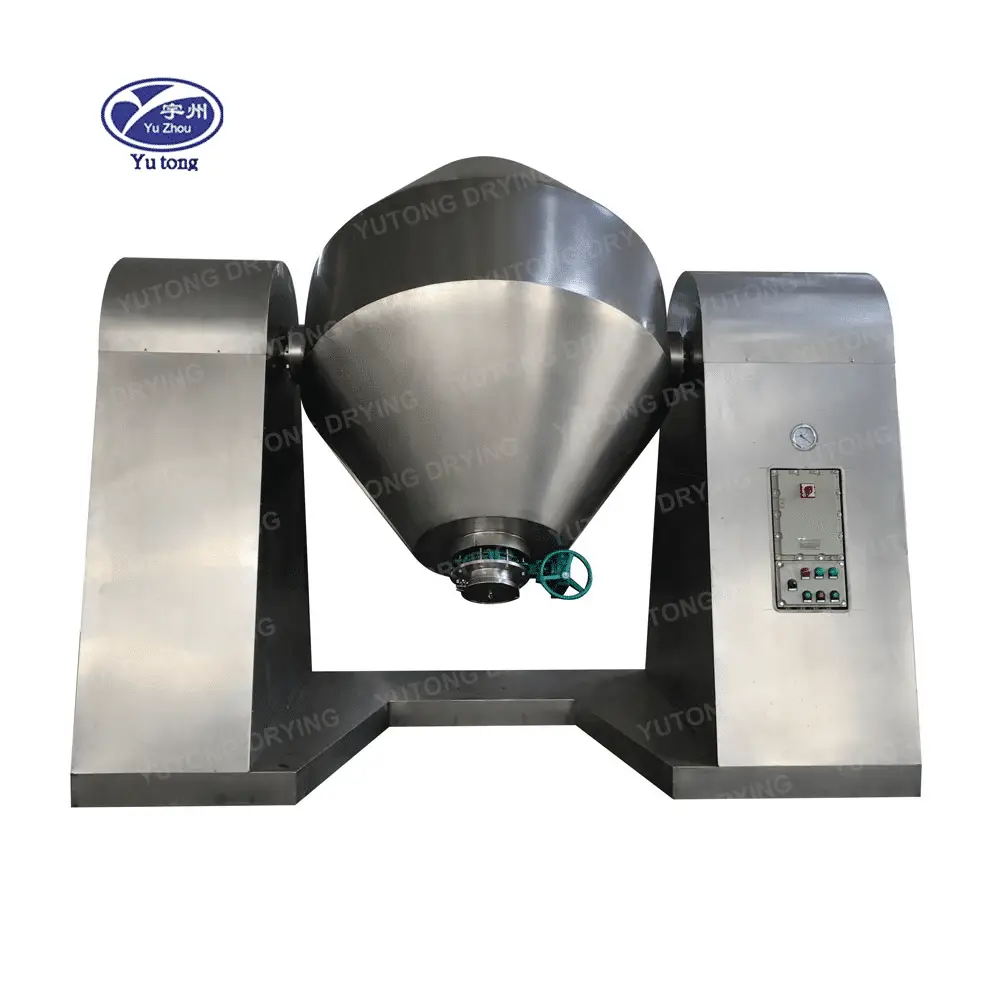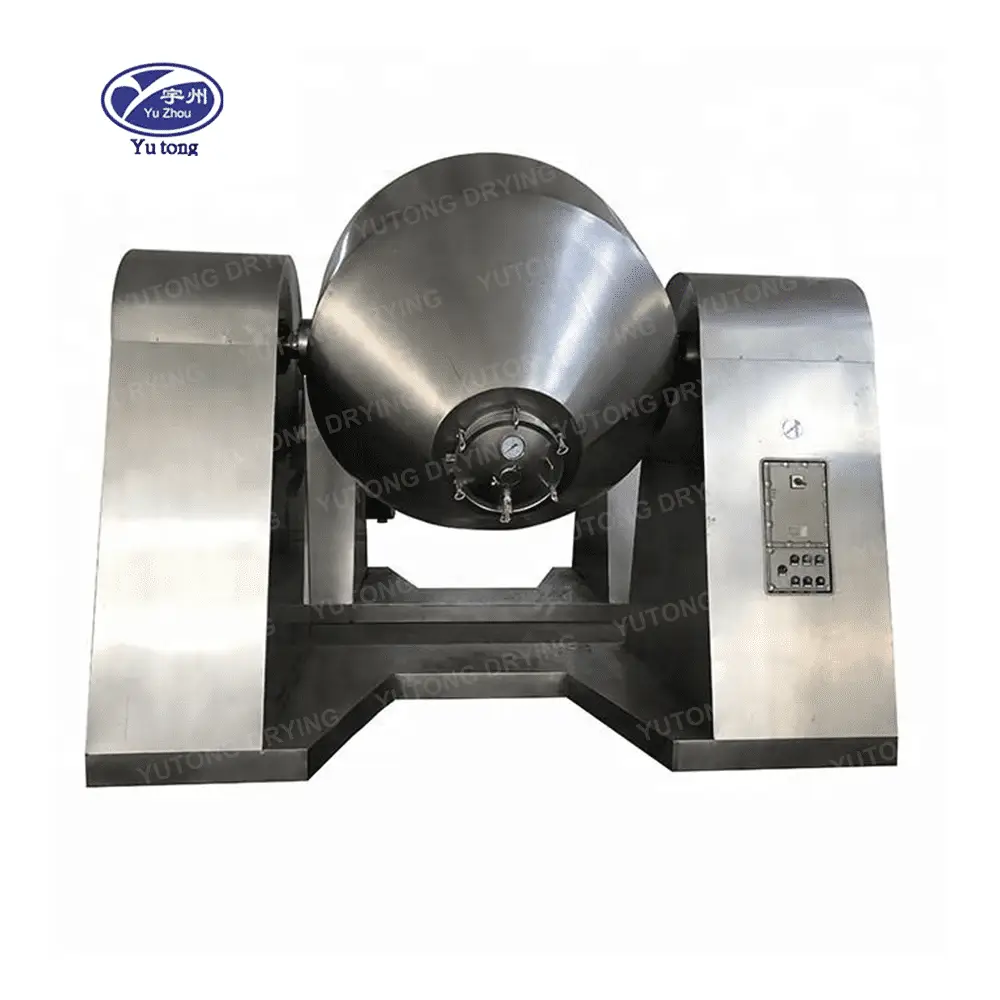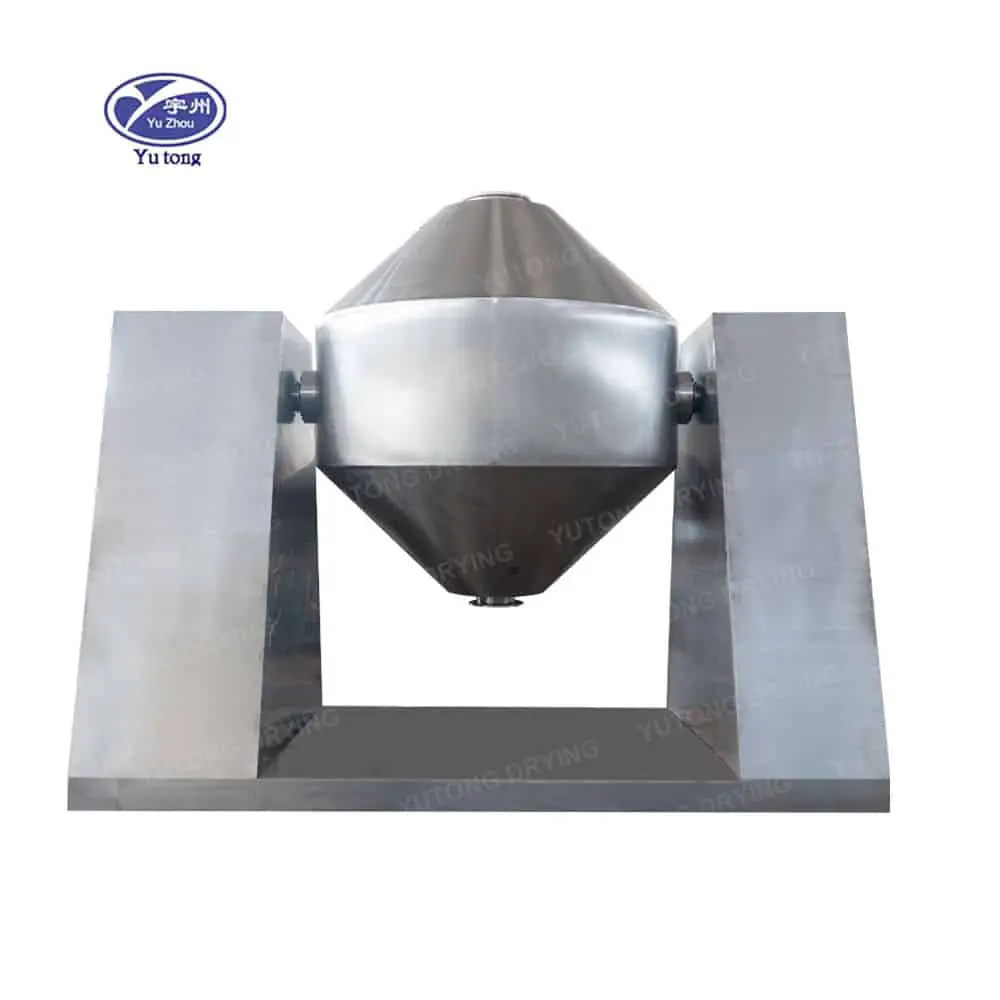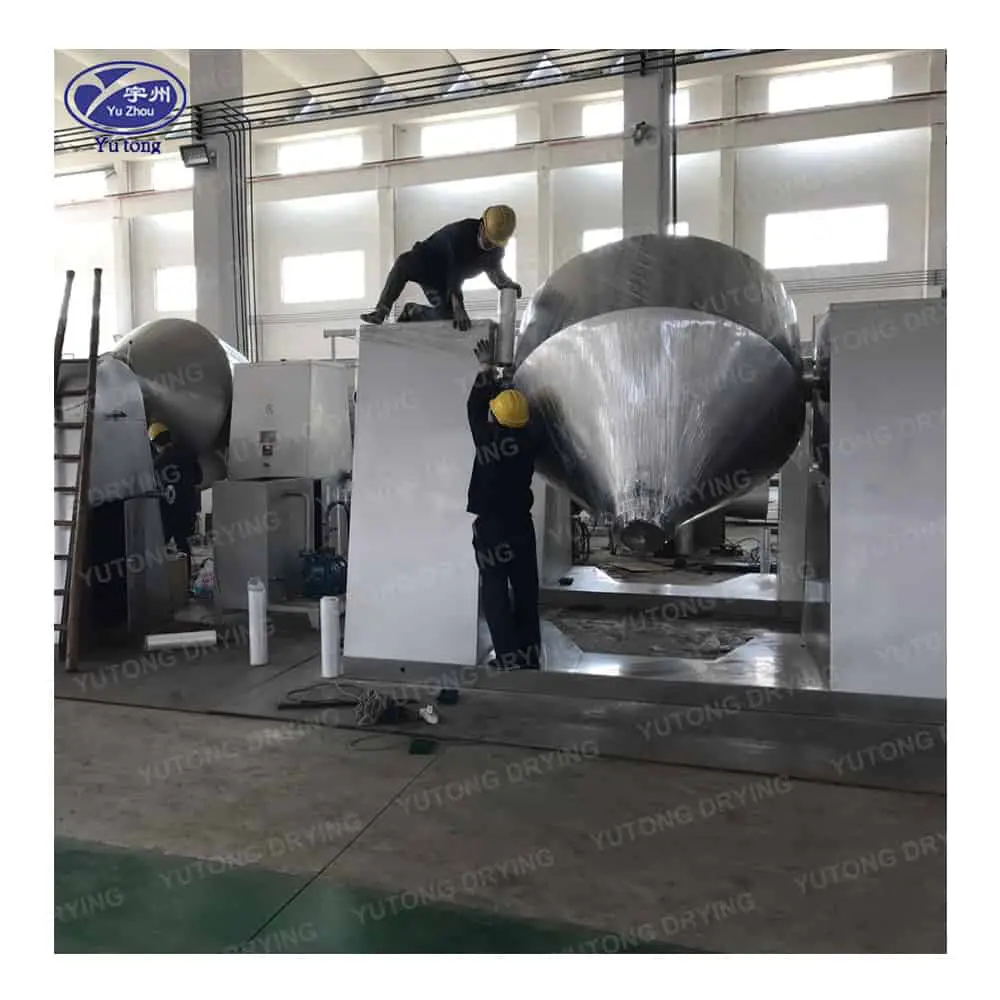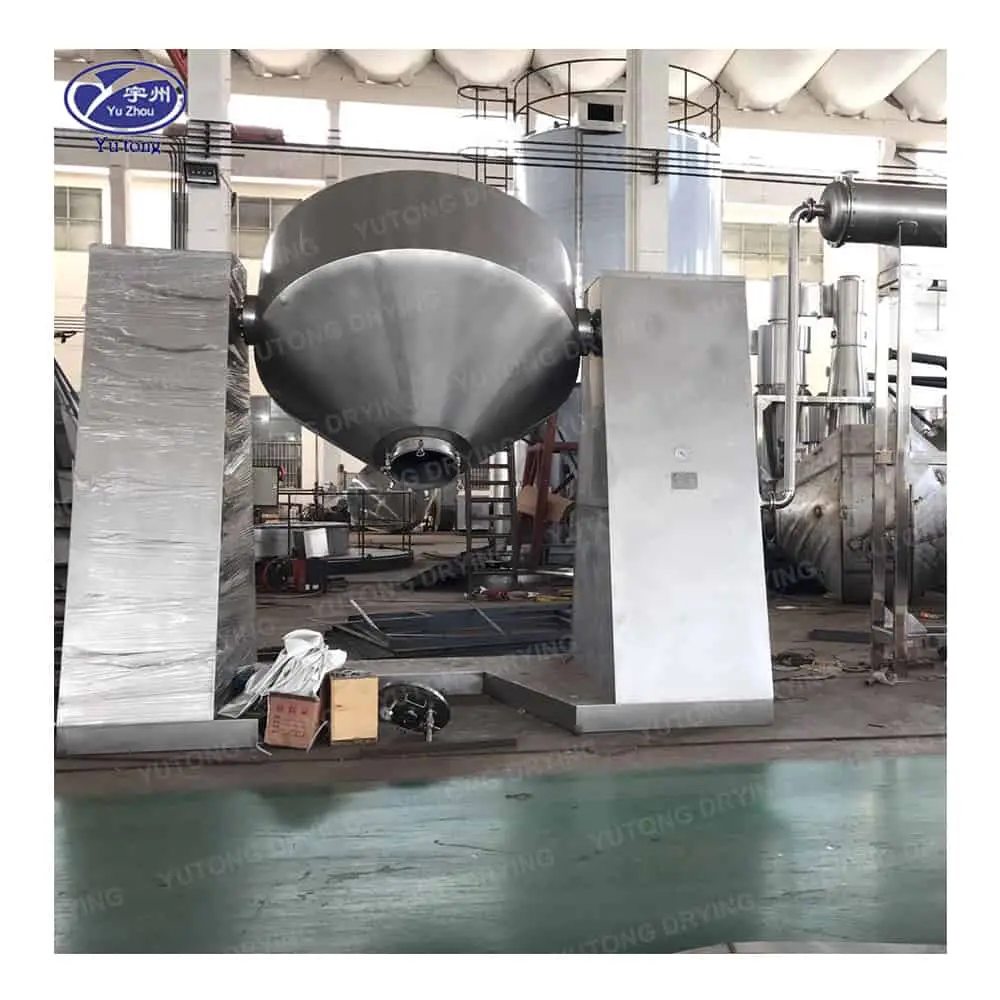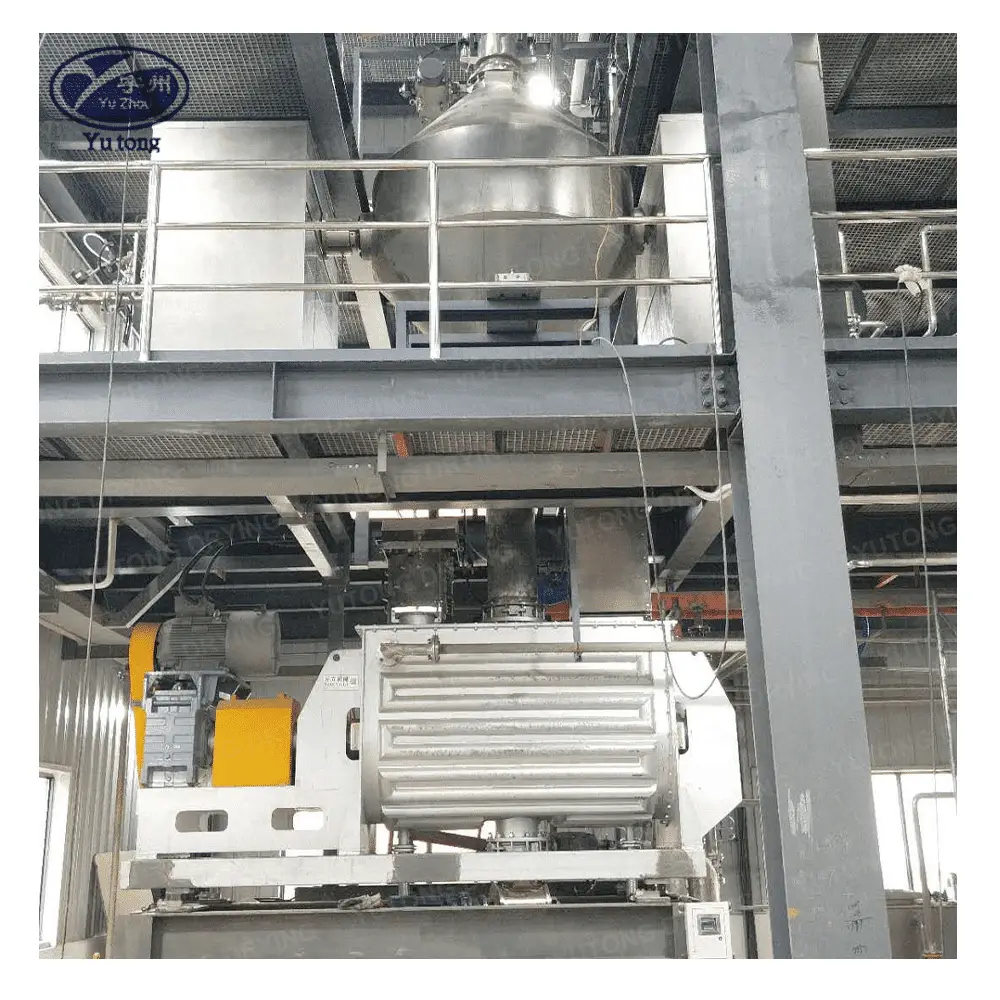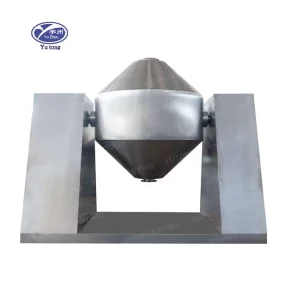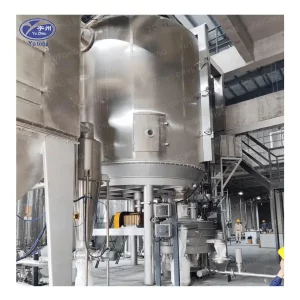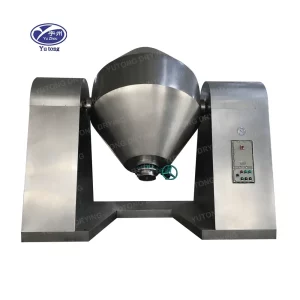Table of Contents
Product Detail
In the realm of drying technologies, vacuum dryers stand out due to their efficiency and versatility. Whether you’re dealing with pharmaceuticals, food products, or industrial chemicals, understanding the application and principles behind vacuum dryers can significantly impact the quality and efficiency of your drying processes. As industries continue to evolve with technology, the role of vacuum dryers becomes increasingly critical in maintaining product integrity and enhancing operational efficiency.
What is a Vacuum Dryer?
A vacuum dryer is a type of equipment that removes moisture from substances through the application of vacuum pressure. By lowering the pressure within the chamber, the boiling point of water (or other solvents) is reduced, allowing drying to occur at lower temperatures. This method is particularly beneficial for heat-sensitive materials, ensuring that they retain their essential characteristics throughout the drying process.
Understanding Vacuum Pressure
Vacuum pressure plays a pivotal role in the functioning of vacuum dryers. By creating a low-pressure environment, the boiling point of moisture is significantly lowered, allowing for drying at much lower temperatures than conventional methods. This technique is especially advantageous when handling temperature-sensitive materials that risk degradation or quality loss at higher temperatures.
Benefits for Heat-Sensitive Materials
Heat-sensitive materials, such as certain pharmaceuticals and food products, benefit immensely from vacuum drying. By allowing drying at reduced temperatures, vacuum dryers prevent the thermal degradation that can affect the potency and flavor of these materials. This results in a final product that retains its intended properties, crucial for industries where product integrity is paramount.
Enhanced Efficiency and Versatility
The versatility of vacuum dryers lies in their ability to handle a wide range of materials, from powders and granules to pastes and liquid slurries. This flexibility, combined with their efficiency in reducing drying time and energy consumption, makes them an indispensable tool in modern drying technology. Their design and functionality can be adapted to suit various industrial needs, ensuring optimal performance across different applications.
Types of Vacuum Dryers
Vacuum Tray Dryer
The vacuum tray dryer operates on the principle of creating a vacuum to reduce the boiling point of the solvent, thereby speeding up the drying process. It consists of several trays stacked inside a vacuum chamber, where materials are spread for drying. This setup is ideal for drying powders and granules, allowing for uniform drying across the trays.
Design and Functionality
The design of vacuum tray dryers allows for efficient heat transfer and uniform drying. Each tray is carefully positioned to ensure even exposure to heat and vacuum, minimizing the risk of uneven drying. This design is particularly effective for batch processing, where consistency and quality control are critical.
Applications in Various Industries
Vacuum tray dryers are commonly used in the pharmaceutical and food industries due to their ability to handle delicate materials. In the pharmaceutical industry, they ensure the stability of active ingredients, while in the food industry, they preserve the nutritional value and flavor of products. Their versatility extends to other sectors, such as chemicals and biotechnology, where precise drying conditions are essential.
Advantages Over Conventional Dryers
Compared to conventional drying methods, vacuum tray dryers offer superior energy efficiency and faster drying times. By operating at lower temperatures, they consume less energy, reducing operational costs. Additionally, the reduced drying time enhances productivity, making them a cost-effective solution for large-scale operations.
Rotary Vacuum Dryer
In a rotary vacuum dryer, the material is placed inside a rotating drum, where it is continuously rotated to ensure uniform drying. The rotary motion helps in breaking lumps and increasing the surface area for efficient drying. This type is often used for drying pastes and wet cakes, providing thorough and consistent drying.
Principle of Operation
The rotary vacuum dryer operates by tumbling the material inside a rotating drum, which ensures that all parts of the material are exposed to the vacuum and heat. This continuous motion breaks up any clumps and exposes more surface area to the drying environment, enhancing the drying efficiency.
Ideal for Specific Applications
Rotary vacuum dryers are particularly suited for materials that require constant agitation during the drying process. This includes pastes, slurries, and wet cakes, which benefit from the mechanical action that prevents clumping and promotes uniform drying. Industries such as pharmaceuticals, chemicals, and food processing frequently utilize these dryers for their specific drying needs.
Efficiency and Performance
The efficiency of rotary vacuum dryers lies in their ability to handle large volumes of material with minimal energy consumption. By combining vacuum pressure with mechanical agitation, they achieve rapid and uniform drying, reducing processing times and operational costs. This makes them a valuable asset in high-demand production environments.
Vacuum Shelf Dryer
A vacuum shelf dryer contains heated shelves on which trays are placed. The shelves provide consistent heat, while the vacuum environment facilitates rapid drying. This type is commonly used in the pharmaceutical and food industries, where precise drying conditions are necessary.
Structure and Mechanism
The structure of vacuum shelf dryers involves multiple heated shelves, each designed to provide consistent and even heat distribution. Trays containing the material are placed on these shelves, allowing for simultaneous drying of various batches. The vacuum environment ensures that moisture is efficiently removed, preserving the quality of the materials.
Applications in Sensitive Industries
Industries that require stringent quality control, such as pharmaceuticals and food processing, rely on vacuum shelf dryers for their precise drying capabilities. These dryers maintain the integrity of heat-sensitive materials, ensuring that active ingredients and nutritional content remain intact throughout the drying process.
Benefits of Shelf Drying
The primary benefit of vacuum shelf drying is its ability to deliver uniform and consistent results. By providing controlled heat and vacuum conditions, these dryers minimize the risk of over-drying or uneven drying, which can compromise product quality. This makes them ideal for applications where product consistency is non-negotiable.
Vacuum Roller Dryer
This type involves a drum or roller that rotates under a vacuum. The material is applied as a thin film on the roller, drying almost instantly due to the reduced pressure and heat from the roller. It’s mainly used for liquid or slurry materials, providing a rapid and efficient drying solution.
Operating Principles
Vacuum roller dryers work by spreading the material as a thin film over a heated roller. As the roller rotates, the material is exposed to a vacuum environment, causing rapid evaporation of moisture. This method is highly effective for drying liquid or slurry materials, where quick and efficient drying is essential.
Suitable for Specific Materials
The design of vacuum roller dryers makes them particularly suitable for materials that can be spread as a thin film. This includes various liquids, slurries, and semi-solids commonly found in industries such as food processing, pharmaceuticals, and chemicals. The ability to handle these specific materials efficiently makes roller dryers a preferred choice for many manufacturers.
Advantages of Rapid Drying
The primary advantage of vacuum roller dryers is their ability to achieve rapid drying times. By utilizing a combination of heat and vacuum, these dryers can quickly remove moisture from materials, enhancing productivity and reducing operational costs. This efficiency makes them an attractive option for industries looking to optimize their drying processes.
Applications of Vacuum Dryers
Food Industry
Vacuum dryers are extensively used in the food industry for drying heat-sensitive food products such as fruits, vegetables, and dairy products. The low-temperature drying preserves the nutritional content and flavor of the food, making it an essential tool for food preservation and quality control.
Preserving Nutritional Value
One of the key benefits of using vacuum dryers in the food industry is their ability to preserve the nutritional value of food products. By drying at low temperatures, essential vitamins, minerals, and enzymes remain intact, ensuring that the final product retains its health benefits. This is particularly important for products like fruits and vegetables, where nutrient preservation is a primary concern.
Enhancing Flavor and Texture
In addition to preserving nutritional content, vacuum drying helps maintain the natural flavor and texture of food products. The gentle drying process prevents flavor loss and preserves the natural color and texture, resulting in a more appealing product for consumers. This is crucial for premium food products where taste and appearance are key selling points.
Applications in Food Preservation
Vacuum dryers play a vital role in food preservation by extending the shelf life of products. By removing moisture, they inhibit the growth of microorganisms that cause spoilage, ensuring that food products remain fresh for extended periods. This is particularly beneficial for products that require long-term storage, such as dried fruits and vegetables.
Pharmaceutical Industry
In pharmaceuticals, vacuum dryers ensure that active ingredients are dried without degradation. The precision and control offered by vacuum drying make it ideal for producing high-purity products, essential for maintaining the efficacy and safety of pharmaceutical formulations.
Maintaining Active Ingredient Stability
The stability of active ingredients is critical in pharmaceuticals, and vacuum dryers provide the precise conditions needed to maintain this stability. By preventing thermal degradation, vacuum drying ensures that active ingredients retain their potency and effectiveness, which is crucial for the safety and efficacy of pharmaceutical products.
Ensuring Product Purity
Purity is a paramount concern in pharmaceutical manufacturing, and vacuum dryers contribute significantly to achieving high-purity products. The controlled drying environment minimizes the risk of contamination and degradation, ensuring that final products meet stringent quality standards. This is especially important for sensitive formulations that require precise drying conditions.
Applications in Drug Formulation
Vacuum dryers are widely used in the formulation of various pharmaceutical products, including tablets, powders, and injectable drugs. Their ability to provide consistent and uniform drying ensures that each batch meets the required specifications, enhancing the reliability and safety of pharmaceutical products.
Chemical Industry
For chemical processes, vacuum dryers are used to dry heat-sensitive chemicals and intermediates. The ability to control the drying environment minimizes the risk of chemical reactions during drying, ensuring the stability and quality of chemical products.
Drying Heat-Sensitive Chemicals
In the chemical industry, many processes involve heat-sensitive materials that require careful handling during drying. Vacuum dryers provide the ideal solution by allowing for low-temperature drying, preventing thermal degradation and preserving the chemical properties of the materials.
Preventing Undesired Reactions
The controlled environment of vacuum dryers minimizes the risk of undesired chemical reactions during the drying process. By removing moisture efficiently and maintaining stable temperatures, these dryers ensure that chemical products remain stable and free from contamination, which is crucial for maintaining product quality.
Applications in Chemical Production
Vacuum dryers are essential in the production of various chemical products, including catalysts, intermediates, and specialty chemicals. Their ability to provide precise drying conditions ensures that each product meets the required quality standards, enhancing the efficiency and reliability of chemical manufacturing processes.
Advantages of Using Vacuum Dryers
- Energy Efficiency: Vacuum dryers require less energy compared to conventional dryers because they operate at lower temperatures. This results in significant energy savings, reducing operational costs and contributing to environmental sustainability.
- Quality Preservation: The gentle drying process helps preserve the quality and potency of sensitive materials. By preventing thermal degradation, vacuum dryers ensure that final products maintain their intended properties, crucial for industries where product integrity is paramount.
- Uniform Drying: The design of vacuum dryers ensures consistent and uniform drying of materials. By providing controlled heat and vacuum conditions, they minimize the risk of uneven drying, enhancing product quality and consistency.
- Reduced Drying Time: The application of vacuum pressure significantly reduces the drying time, increasing productivity. This efficiency allows for faster processing of materials, improving overall production timelines and reducing operational costs.
Vacuum Dryer Construction and Design
The construction of a vacuum dryer is crucial for its efficiency. A typical setup includes a vacuum chamber, heating elements, and a vacuum pump. Materials are placed in the chamber, and the vacuum pump reduces the pressure to start the drying process. Proper insulation and sealing are critical to maintaining the vacuum environment, ensuring optimal performance and energy efficiency.
Components of a Vacuum Dryer
The main components of a vacuum dryer include the vacuum chamber, heating elements, and vacuum pump. The chamber is designed to withstand low-pressure environments, while the heating elements provide consistent and controlled heat. The vacuum pump creates the necessary low-pressure environment, facilitating efficient moisture removal.
Importance of Insulation and Sealing
Proper insulation and sealing are essential for maintaining the vacuum environment within the dryer. Insulation minimizes heat loss, ensuring energy efficiency, while sealing prevents air leaks that can compromise the vacuum and drying efficiency. These factors are crucial for achieving optimal performance and reducing operational costs.
Design Considerations for Efficiency
When designing a vacuum dryer, considerations such as material compatibility, capacity, and energy efficiency are crucial. The design should facilitate easy loading and unloading of materials while also ensuring that the drying process is uniform and consistent. These design elements contribute to the overall efficiency and effectiveness of the vacuum drying process.
Vacuum Dryers in Laboratories
In laboratories, vacuum dryers are used for small-scale drying applications. Lab-scale vacuum dryers are compact and designed for precision drying, making them suitable for research and development purposes. They provide the controlled environment necessary for experimenting with different materials and drying conditions.
Role in Research and Development
Vacuum dryers play a critical role in laboratory settings, where precise control over drying conditions is essential for research and development. They allow scientists to experiment with various materials and drying parameters, helping to optimize processes and develop new products and formulations.
Precision and Control
Lab-scale vacuum dryers offer unparalleled precision and control, allowing researchers to fine-tune drying conditions to achieve desired results. This level of control is crucial for developing new materials and processes, ensuring that experiments yield reliable and reproducible results.
Applications in Various Fields
Laboratory vacuum dryers find applications in various fields, including pharmaceuticals, chemistry, and material science. Their ability to provide controlled drying conditions makes them indispensable for research and development, where precise drying is essential for accurate experimentation and analysis.
Choosing the Right Vacuum Dryer
When selecting a vacuum dryer, consider the following:
- Material Compatibility: Ensure the dryer is compatible with the materials you intend to dry. Different materials require specific drying conditions, and selecting the right dryer ensures optimal performance and product quality.
- Capacity: Choose a dryer with the appropriate capacity for your needs. Consider the volume of material you need to process and select a dryer that can handle this efficiently, ensuring consistent and reliable drying results.
- Efficiency: Consider energy consumption and drying speed. Opt for a dryer that offers energy efficiency and fast drying times, reducing operational costs and enhancing productivity.
- Maintenance: Look for a design that facilitates easy cleaning and maintenance. Regular maintenance is essential for optimal performance, and a design that simplifies this process enhances the longevity and reliability of the dryer.
Maintenance and Safety
Regular maintenance of vacuum dryers ensures optimal performance and longevity. This includes checking seals, inspecting vacuum pumps, and guaranteeing the heating elements are functioning correctly. Safety precautions, such as proper ventilation and temperature controls, are essential to prevent accidents and ensure operator safety.
Routine Maintenance Procedures
Routine maintenance involves regular inspection and servicing of the vacuum dryer components. This includes checking seals for leaks, inspecting vacuum pumps for wear and tear, and ensuring that heating elements are functioning efficiently. Regular maintenance helps prevent breakdowns and extends the lifespan of the equipment.
Importance of Safety Measures
Implementing safety measures is crucial for the safe operation of vacuum dryers. This includes ensuring proper ventilation to prevent the buildup of hazardous fumes and installing temperature controls to prevent overheating. Adhering to these safety protocols minimizes the risk of accidents and provides a safe working environment.
Training and Operator Safety
Proper training of operators is essential for the safe and efficient use of vacuum dryers. Operators should be familiar with the equipment’s operation, maintenance procedures, and safety protocols. This knowledge helps prevent accidents and ensures that the dryer is used effectively, maximizing its performance and longevity.
Innovations in Vacuum Drying Technology
Recent advancements in vacuum drying technology include the development of more energy-efficient systems and automation features that allow for precise control over drying parameters. These innovations contribute to enhanced productivity and reduced operational costs, making vacuum dryers even more valuable in modern industrial processes.
Energy-Efficient Systems
Innovations in vacuum drying technology have led to the development of systems that are more energy-efficient, reducing operational costs and environmental impact. These systems utilize advanced materials and technologies to minimize energy consumption while maintaining optimal drying performance, making them a sustainable choice for industries.
Automation and Precision Control
The integration of automation features in vacuum dryers allows for precise control over drying parameters, enhancing efficiency and consistency. Automated systems enable real-time monitoring and adjustments, ensuring that drying conditions are optimal and reducing the need for manual intervention, leading to increased productivity and reliability.
Future Trends and Developments
The future of vacuum drying technology is likely to see further advancements in energy efficiency, automation, and innovative technology integration. Developments such as IoT connectivity and AI-driven process optimization are poised to revolutionize vacuum drying, making it even more efficient, reliable, and adaptable to changing industrial needs.
Conclusion
Vacuum dryers are an indispensable component of modern drying processes across various industries. Their ability to provide efficient, uniform, and gentle drying makes them invaluable for producing high-quality products while preserving the integrity of the materials. By understanding the principles, types, and applications of vacuum dryers, businesses can make informed decisions to optimize their drying operations. As technology continues to advance, vacuum dryers will play an increasingly important role in enhancing efficiency and sustainability in industrial drying processes.
Specifications
|
Model
|
100
|
500
|
1000
|
1500
|
2000
|
5000
|
|
Volume (L)
|
100
|
500
|
1000
|
15000
|
2000
|
5000
|
|
Maximum Loading Volume (L)
|
40
|
200
|
400
|
600
|
800
|
2000
|
|
Maximum Loading Capacity (kg)
|
20
|
100
|
200
|
300
|
400
|
1000
|
|
Rotating Speed (rpm)
|
3~13
|
6
|
5
|
4
|
||
|
Motor Power (k w)
|
0.75
|
1.5
|
3
|
4
|
5.5
|
15
|
|
Floor Area (mm)
|
2160 × 800
|
2350× 800
|
2860 × 1300
|
3060 × 1300
|
3260 × 1400
|
4400 × 2500
|
|
Rotation Height (mm)
|
1750
|
2250
|
2800
|
2940
|
2990
|
4200
|
|
Design Pressure In Container (MPa)
|
-0.09 to 0.096
|
|||||
|
Interlayer Design Pressure (MPa)
|
≤ 0.3
|
|||||
|
Weight (kg)
|
800
|
1200
|
2800
|
3300
|
3600
|
8600
|
Applications
Applicable Industries: Machinery Repair Shops, Food & Beverage Factory, Farms, Retail, Food Shop, Energy & Mining, Food & Beverage Shops

